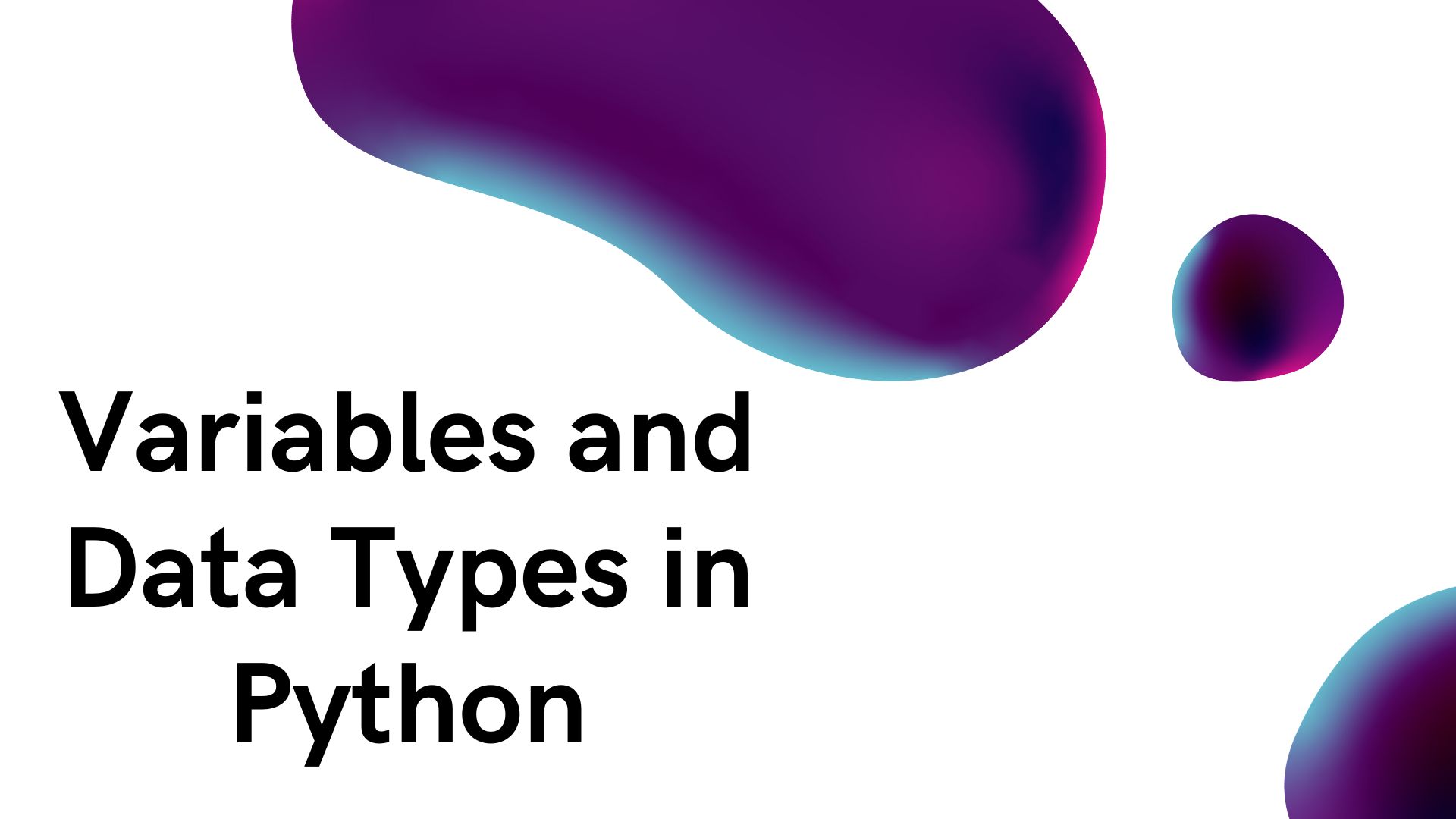Variables and Data Types in Python

Welcome to this blog on variables and data types in Python! Python is a versatile programming language that offers a wide range of data types to handle various types of information. In this post, we will explore the concept of variables and some commonly used data types in Python.
Variables
In Python, variables are used to store values. You can think of a variable as a container that holds a specific piece of information. To create a variable, you simply need to choose a name for it and assign a value using the assignment operator (=).
# Variable assignment
name = "John Doe"
age = 25
salary = 5000.00In the example above, we created three variables: name, age, and salary. The name variable stores a string, the age variable stores an integer, and the salary variable stores a floating-point number.
It's important to follow certain rules and conventions when naming variables:
- Variable names must start with a letter or underscore (_).
- Variable names are case-sensitive, so
ageandAgewould be treated as different variables. - Variable names can include letters, digits, and underscores.
- Avoid using reserved words or built-in function names as variable names.
Here are some examples of invalid variable names:
# Invalid variable names
3_employees = 10 # starts with a digit
my-variable = 5 # contains a hyphen
if = 8 # uses a reserved wordRemember, choosing meaningful and descriptive names for variables can improve the readability and maintainability of your code.
Data Types
Python provides several built-in data types to handle different kinds of information. Let's explore some commonly used data types:
1. Numeric Types:
Python supports various numeric types, including integers (int), floating-point numbers (float), and complex numbers (complex). These data types are used to represent numerical values.
# Numeric Types
count = 10
pi = 3.14159
complex_num = 2 + 3j2. Strings:
A string is a sequence of characters enclosed in single quotes (') or double quotes ("). Strings are used to represent text in Python.
# Strings
name = "John Doe"
greeting = "Hello, World!"3. Lists:
A list is an ordered collection of items. It can contain elements of different data types and is denoted by square brackets ([]). Lists are mutable, which means you can modify their contents.
# Lists
numbers = [1, 2, 3, 4, 5]
names = ["Alice", "Bob", "Charlie"]4. Tuples:
Similar to lists, tuples are ordered collections of items. However, unlike lists, tuples are immutable, meaning their contents cannot be changed after creation. Tuples are denoted by parentheses (()).
# Tuples
point = (3, 4)
dimensions = (10, 20, 30)5. Dictionaries:
A dictionary is an unordered collection of key-value pairs. Each value is associated with a unique key, allowing for fast retrieval. Dictionaries are represented using curly braces ({}).
# Dictionaries
student = {"name": "Alice", "age": 20, "grade": "A"}6. Sets:
A set is an unordered collection of unique elements. Sets are useful when you want to store multiple items without any duplicates.
# Sets
fruits = {"apple", "banana", "orange"}7. Booleans:
The boolean data type represents either True or False values, indicating the truth or falsity of a condition.
# Booleans
is_valid = True
is_greater = 10 > 5These are just a few examples of data types in Python. The language also provides additional types like bytes, bytearrays, and more. Understanding and utilizing the appropriate data types is crucial for effective programming in Python.
Conclusion
In this post, we covered the fundamentals of variables and various data types in Python. By understanding these concepts, you can create powerful and flexible programs to handle different kinds of information. Remember to follow the rules and conventions for variable naming to write clean and readable code.
I hope you found this blog post informative and helpful. Variables and data types are essential building blocks in Python programming. With practice, you'll become proficient in manipulating and working with various types of data.
That's all for this blog, See you next time!